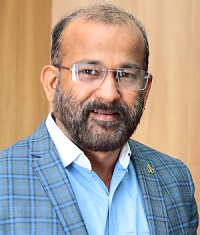Message From SESEI
 Greeting from Project SESEI!!!
Greeting from Project SESEI!!!
Dear Readers,
I would like to begin the sixth edition of SESEI newsletter Europe with wishing all of you a very Happy 2021! May this year be full of hope and victory for all of us, harbinger of peace, good health and vitality for our families, society, country and most importantly economy.
This edition of the SESEI Newsletter Europe will provide you with important snippets from India on the Project priority sectors covering ICT, Smart Cities, Automotive, Electrical Equipment including Consumer Electronics, Energy Efficiency and Environment, etc.
The ongoing efforts to strengthen the Indian economy and give further impetus to foreign investments and growth of industry and infrastructure, Department for Promotion of Industry and Internal Trade (DPIIT) has issued the Patent (Amendment) Rules, 2020 (“The Rules”). The key amendments that have now been introduced are related to the working Statement regarding the working of Patented Invention in India as required under Form 27 and changes to the provisions of filing of Priority documents under Rule 21 of the Rules. Similarly, the DPIIT is also working towards introducing a single-window clearance system for investors by mid-April 2021. This will be a technology-based single window, which apart from giving all the information about land, procedures, requirements, will be linked to a unified single fleet of information and approving ministries. This will help bring down multiplicity of applications and compliances. As per a survey done by EY, India is one the three most favoured destination for investments because of market potential, skilled workforce, policy reforms and availability of raw materials.
Momentum is picking up in the Smart City Mission, recently Telecommunication Engineering Centre has announced adoption of oneM2M specifications as national standard. This will help establish the standardised technology framework for providing Machine to Machine services in India and also help accelerate deployment of M2M services across verticals and facilitate optimal utilisation of communication layer resources. Telecom Regulatory Authority of India (TRAI) has also released a White Paper on the Role of digital technologies for Smart Cities, emphasizing on the need for global standards, smart solutions and reference architecture for realization of Smart Cities in India.
The Ministry of Road Transport and Highways has allowed the use of Hydrogen-enriched compressed natural gas. The ministry has been notifying various alternative clean fuels for transportation. The Bureau of Indian Standards (BIS) has also developed specifications of H-CNG as a fuel for automotive purposes. Government also offering incentives to companies setting up advanced battery manufacturing facilities as it seeks to promote the use of electric vehicles and cut down its dependence on oil.
Introduction and rollout of 5G Technologies is delayed in India due to the covid pandemic. 5G technologies are slated to provide faster data speeds, reliable connectivity and low latency— all needed for a digitally connected society and for achieving the cities and industry with a vast network of connected devices sending vast amounts of data via ultrafast broadband.
India's electric vehicle (EV) market is estimated to be a Rs. 50,000 crore (US$ 7.09 billion) opportunity by 2025, with two- and three-wheelers expected to drive higher electrification of the vehicles. To support and create the EV ecosystem in India, localization of several components and especially the EV components is being encouraged. The department of heavy industries extended the deadline for the localisation of several components under its phased manufacturing programme (PMP) for electric vehicles (EV) from October 1 to April 1 next year, offering a breather to the industry. The move is expected to help the fledgling EV industry as the localisation plans of several companies were derailed due to the disruption from the pandemic.
While, Ministry of Communications is working on allocation of spectrum for 5G services and has identified the 3300 MHz to 3600 MHz band. India’s application for its own 5G technology has completed the evaluation phase of ITU's International Mobile Telecommunications 2020 (IMT-2020) vision and now conforms with the stringent performance requirement. This means that India's contribution is now being accepted as the global 5G standard.
India is deeply committed towards accomplishing the goals set out in the Paris Agreement and a high level inter-ministerial Apex Committee has been set up under the Ministry of Environment, Forest and Climate Change (MoEFCC). Ministry of Power is working towards replacing coal-fired power plants with renewable generating capacity in a bid to cut the nation's carbon footprint. However, India's power ministry has proposed pushing back the deadlines for adoption of new emission norms by coal-fired power plants stating "an unworkable time schedule" would burden utilities and lead to an increase in power tariffs.
The Newsletter carries, information on many other important issues related to investment landscape and market synopsis concerning important project priority sectors in India. We also provide you details of the upcoming important events/ seminars and workshops. Draft standards formulated by the standardization bodies are annexed with the Newsletter.
I wish you all a very happy New Year once again. Hope you will find this Newsletter very informative. Happy Reading!!!!
Warm regards,
Dinesh Chand Sharma
(Seconded European Standardization Expert in India)
Director – Standards & Public Policy
Mobile: +91 9810079461, Desk: +91 11 3352 1525
E-mail: dinesh.chand.sharma@sesei.eu





